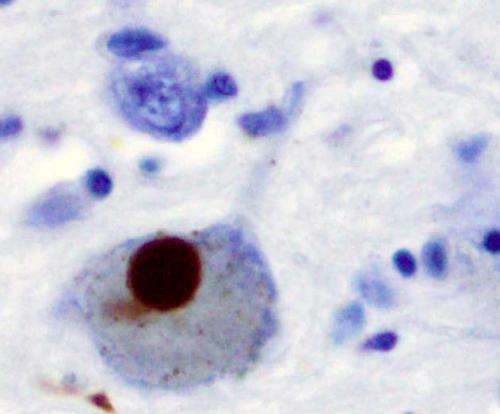Researchers reveal neural markers of sequential working memory deficits in de novo Parkinson’s disease

A multi-institutional research team has demonstrated that hyper-activation and weakened functional connectivity of the subthalamic nucleus (STN) are neural markers of sequential working memory deficits in de novo Parkinson’s disease (PD). This study was published online in Movement Disorders.
People may arrange tasks in the order they come or prioritize a task that is due first. Flexible planning depends on the ability to maintain and manipulate sequential information online. In healthy brains, a neural system for sequential working memory comprises the lateral prefrontal cortex, posterior parietal cortex, STN, globus pallidus, and thalamus. In aged brains, the prefrontal and posterior parietal cortices are over-activated, psychophysiological interactions between cortices are weakened, but functional connectivity between cortices and the striatum is strengthened. Neural compensation within the network may help keep sequential working memory strong in older adults. However, sequential working memory is significantly impaired even in patients with mild PD, which coincides with but is independent of motor symptoms.
To investigate the neural markers of sequential working memory deficits at the early stages of PD, the researchers recruited 50 patients with do novo PD and 50 healthy participants. All participants completed a digit ordering task in a magnetic resonance imaging (MRI) scanner when their brain activity was recorded.
In this task, participants were asked to remember a sequence of four digits and recall the digits in ascending order. Two memory processes were measured in the task. Participants only needed to remember the original sequence if the digits appeared in ascending order (maintenance of sequences), and they had to reorder the digits (manipulation of sequences) and recall the new sequence if the digits were fully randomized. Participants’ blood oxygen level-dependent (BOLD) functional MRI signals were recorded when they performed the task. The increase/decrease of the BOLD signals reflects the increase/decrease of regional brain activity.
Then the researchers analyzed regional brain activations and inter-regional functional connectivity in the neural network for sequential working memory. They found that patients’ poor performance correlated with hyper-activation of the STN and weakened functional connectivity between the STN and striatum.
Healthy participants who showed lower STN activation and more robust STN-striatum connectivity performed more accurately in maintaining sequences. The STN was more activated, and the task accuracy was decreased when participants had to reorder the digits. Healthy participants who showed greater ordering-related STN activation change exhibited smaller accuracy cost in manipulating sequences. That means the STN may play a modulatory role in maintaining and manipulating sequential information.
The STN’s modulatory role was remarkably weakened in patients with de novo PD. The modulation was partially realized by the STN-striatum functional connectivity. The contribution of the STN activation or activation change was absent.
This study demonstrated STN’s modulatory role in sequential working memory and linked sequential working memory deficits in de novo PD with STN’s altered functions. It implies that down-regulation of the STN activation and up-regulation of the STN functional connectivity may be a potential strategy for enhancing PD’s sequential working memory.
Source: Read Full Article
